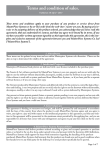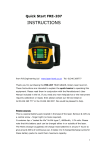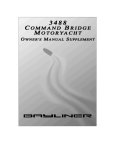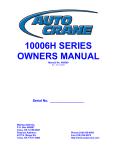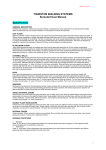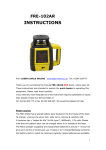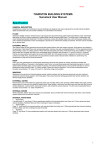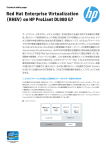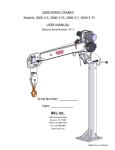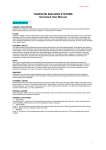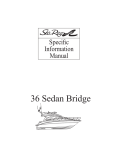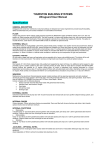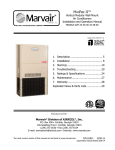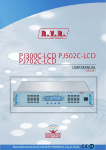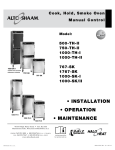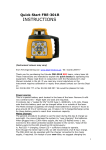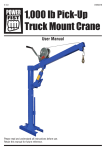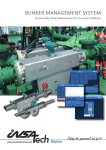Download THURSTON BUILDING SYSTEMS Surespace User Manual
Transcript
THURSTON BUILDING SYSTEMS Surespace User Manual Issue 3 08~11 Client: Job/ Building Drawing Number: Generic Specification Surespace Range GENERAL DESCRIPTION Surespace tough low maintenance modular buildings are designed and value engineered to provide long life durability, whilst providing additional space requirements with minimal groundworks, minimal user disruption at relatively short notice, often as a turnkey package. This product is provided with a 15 year warranty against structural failure, and is fully re-locatable. The Surespace building can be configured or re-configured for various utilities, either in the factory or on site. FLOOR Agrement certified moisture resistant heavy duty tongued and grooved flooring grade strand board fixed to joists covered with bonded flexible heavy duty vinyl flooring with continuously welded seam. Galvanised interlocking steel floor trays with preformed integral cross members provide underdrawing, insulation support as well as acting as floor joists, these are supported on a cold formed galvanised box perimeter base frame. This frame provides a stable and aesthetically pleasing interface with groundworks. With the additional cross bracing included in the base construction, the floors are designed to provide for a 2 2 uniform floor loading of 5 kn/m . The floor is insulated to 0.25 W/m K. EXTERNAL WALLS The external walls are fully galvanised structural steel panels 305mm wide with integral supports. Wall sections are welded to the perimeter of both base frame and roof perimeter gutter. Internal finish is embossed vinyl wall covering laminated to 12.5mm plasterboard lining and providing a class ‘O’ surface spread of flame with extruded plastic joint strips. Alternative linings are 2 available on request. Walls are insulated by means of 50 mm of urethane insulation providing a ‘U’ value of 0.3.3 W/m K. External finishes are spray applied semi-gloss fast enamel to BS 4800 with trims including the base. Textured finishes may be applied and other forms of decorative cladding included to suite any environment. Zinc rich galvanic primer is applied to all external mild steel surfaces and weld areas, all panel joints are polyurethane sealant sealed. Natural trickle ventilation is achieved by the incorporation of high and low level permavents. ROOF Heavy duty fully galvanised and mechanically interlocking structural steel panels are riveted, bonded and sealed with high UV resistant sealant/ adhesive and acrylic gel corner tapes. The roof is strengthened and provided with integral lifting eyes as part of the building structure, this is to permit safe handling craneage and location. Rainwater is collected by means of a galvanised gutter, and is discharged to traditional rainwater pipes. The internal ceiling finish is embossed vinyl covering laminated to 12.5mm plasterboard lining providing class ‘O’ surface spread of flame fire rating as standard. The roof also incorporates fibrous 2 insulation and provides a ‘U’ value of 0.0.25 W/m K. Alternative linings are available. WINDOWS Maintenance free aluminium framed polyester powder coated anodised windows fully opening top hung casements. Standard windows are 908 mm wide by 1000mm high, single glazed in 4mm toughened glass. Double glazed units are available if specified. The windows are equipped with cockspur handle fasteners, and friction stays. Heavy duty horizontal sliding galvanised steel window shutters can be fitted; complete with internal single person operation, locking bolts and other anti-jemmy features, but not supplied as standard. EXTERNAL DOORS External doors are constructed from galvanised steel, fully insulated. With a clear opening as agreed in the contract the single door is hung on a zinc plated full height ‘piano’ hinge and is fitted with a five lever mortice lock, with thumb turn and satin anodises aluminium door furniture. The door also incorporates fibrous insulation and provides a ‘U’ value of 0.697w/mc. 1 THURSTON BUILDING SYSTEMS Surespace User Manual Issue 3 08~11 INTERNAL DOORS Where indicated, 726mm wide doors factory pre assembled. Doors are fitted with chrome furniture and either a latch handle; optional mortice lock or bathroom furniture. INTERNAL PARTITIONS Standard:Class ‘O’ vinyl faced 12.5mm plasterboard partition with extruded plastic joint strips and 1.25mm galvanised steel channel studding. CONFIGURATION: Surespace buildings are designed to be connected to other Thurston Surespace buildings, either side by side or end to end by means of Sitelink interconnecting weatherproof corridors. The units can also be double stacked by bolting the units together, subject to suitable ground works. Surespace Dimensions Surespace Overall External Eyebolt Centres Weight 4 eyebolts are fitted as standard Model Max Min Internal Sling Empty Handling Leg Weight Length Width SC1610 SC2010 SC2410 SC2810 SC3210 SC3610 SC4010 M M M M 5.03 3.42 3.27 4.27 6.25 3.42 3.27 4.27 7.47 3.42 3.27 4.27 8.68 3.42 3.27 4.27 9.90 3.42 3.27 5.00 11.12 3.42 3.27 5.49 12.34 3.42 3.27 6.10 Ground to Floor Level = 0.33M M 3.18 3.18 3.18 3.18 3.18 3.18 3.18 Tonne 2.56 2.98 3.4 3.84 4.3 4.75 5.2 Tonne 5.0 5.0 5.0 6.0 6.0 6.0 7.0 M 5.4 5.4 5.4 5.4 6.41 6.41 6.41 Floor Length Width Height Area M2 M M M 12.77 4.63 2.76 2.42 16.14 5.85 2.76 2.42 19.50 7.07 2.76 2.42 22.88 8.29 2.76 2.42 26.24 9.51 2.76 2.42 29.60 10.73 2.76 2.42 32.98 11.95 2.76 2.42 Transport and Handling Thurston Building systems can deliver your preferred Surespace unit directly to your factory, site or point of use. If you wish to relocate your building Thurston Building systems can provide this service for you. However, Surespace buildings have been designed to make relocation and transportation as simple as possible and any reputable haulage contractor can readily undertake the process. CRANE HANDLING Depending on site access or location it may be necessary to position the unit using a mobile crane. Each unit has secure craning points; crane shackles/hooks must be of the correct rating. All craning points must be used to lift the unit, with equal chain lengths to ensure an even distribution of load. The minimum chain lengths specified above must be used. The maximum 2 THURSTON BUILDING SYSTEMS Surespace User Manual Issue 3 08~11 weight of the unit must not exceed the maximum lifting mass indicated on the specification plate, which can be found on the bottom skirt of the building. The minimum crane capacity will depend on the maximum mass of the unit to be lifted and the overall reach necessary to position the unit. Your local cranage contractor should be consulted and will advise on suitable lifting plant and route planning to ensure low bridges and obstructions are avoided. TRANSIT Transit by platform lorry or trailer on public roads must comply with statutory legislation including Road Traffic Act, Construction and Use Regulations as well as any Local Authority regulations that may apply. The most important aspect to consider is the length and width of the building to be transported, and when the building skids are positioned on the lorry bed, the overall height, and if applicable, the overhang of the Surespace building. Ensure that there are no loose laid items within the unit and external doors and shutters fastened and locked, prior to departure. It is also essential that prior to transportation that all windows, shutters and doors are locked and bolted into the closed position, and that all fixtures and fittings within the unit are securely fixed in place. ACCESS TO SITE The following aspects will need to be taken into account to ensure that any problems on site are minimised and an acceptable standard of health and safety is maintained. Route and access to site – if in doubt arrange for a local haulier to survey route and access prior to delivery. Space on site for manoeuvring lorry, and crane if one is to be used. Potential hazards in relation to extended crane jib, e.g. overhead power cables. Combined mass of load and vehicle must be considered relative to ground conditions – temporary tracking may be required. Siting and Foundations The Surespace range of buildings has been designed to withstand the extremes of the U.K. climate, and the strength and durability of our units has been proven by many years of experience in extreme environments. However, consideration of site conditions is necessary where locally they may be subject to chemical or exposed coastal sites. In such circumstances additional measures may be necessary and Thurston Building Systems will be pleased to advise. FOUNDATION DETAILS The standard range of Surespace buildings can be sited using the jacklegs on any reasonable level site. Thurston Building Systems would be pleased to provide foundation loading recommendations upon request. The building should be positioned so that all four legs carry the weight of the building. The building should be lowered as close to ground as possible, particularly on exposed sites, and the pins securely located in each leg, plus safety clips. On sloping sites it is quite satisfactory for one end or one side of the unit to be supported by extending the inner leg. In such circumstances it is important that all pins are securely located and that the maximum leg extension does not in any event exceed 750mm. N.B.: If the building is on an exposed or sloping site, bolting down of the unit is advisable. Metal shims may be required to ensure the unit is level and adequately supported. Buildings may also be supported directly onto the steel base frame when jacklegs are not required. FOUNDATION LOADS Loading diagrams and loading advice will vary with configuration and size, please seek advice on placement of order REGULATIONS AND STATUTORY LEGISLATION When moving, linking or stacking units care should be taken that the layout formed by the linked buildings complies with relevant legislation – this will in general be the Building Regulations and the Fire Precautions Act. It should also be noted that any local health and safety arrangements including permit to work, induction procedures etc. should be taken into account. 3 THURSTON BUILDING SYSTEMS Surespace User Manual Issue 3 08~11 CONNECTION OF SERVICES Electrical Installation The electrical installation is designed and installed in accordance with the requirements of the IEE Regulations 17 th Edition 2008. Wiring is by twin and earth PVC insulated cables enclose in surface mounted PVC TRUNKING. The electrical trunking system are positioned at ceiling level around the internal perimeter of the building, and incorporate a detachable PVC capping piece to provide full access to wiring All circuits are wired to a multi-way consumer units positioned at high level, with terminals for direct connection to the site electrical supply. All circuits are provided with overload protection utilising miniature circuit breakers and RCD. The type of supply which may be either single or three phase depending on load requirements, and assessed maximum demand, are indicated on the certificate. The electrical installation is inspected and tested in accordance with IEE Regulations, and relevant certificate “Transportable Building Electrical Installation certificates” is supplied with the building, please ensure that the certificate is the correct one and is kept safely. On installation, any live testing should be carried out by an N.I.C.E.I.C contractor and all tests inserted on to electrical completion certificate once the building is live. This is recommended for every building relocation and re-connection. On Installation or relocation Item Details RCD (Main Switch) Check the incoming R.C.D (MAIN SWICH) is working correctly and that it is checked regularly. Maximum Frequency At each relocation Water Heaters Check that all water heaters have the water turned on before switching on the isolators. At each relocation Lighting Room Heaters Carry out functional checks on all lights, and ensure all lamps are in the correct position Check all room heaters have all the packaging removed . Sockets Check all sockets are working correctly Thermostats Check all thermostats that control heaters are working correctly PIR’s & control features Check operation of PIR’s At each relocation At each relocation At each relocation At each relocation At each relocation Natural Gas and LPG Installations Natural Gas installations, where installed, are carried out in accordance with the GAS SAFETY (installation and use) REGULATIONS 1984 and recommendations DM2 Code of Practice for Gas Installations. Completed installations are tested in accordance with all relevant recommendations, and a gas soundness test certificate is supplied with the building. LPG installations are designed, installed and tested in accordance with BS 5482 Pt 2 1988, and a relevant gas soundness test certificate is supplied with the building. Ventilation air for combustion is provided by fixed wall ventilators positioned at high and low level in accordance with BS 5482 Pt 1. At no time should any of the ventilators be covered or obscured. Health and Safety information for the use of LPG Installations is supplied with the building. When the building is in use, this information should be prominently displayed to users and occupants alike. No additional gas fittings should be incorporated without first checking that adequate ventilation is available. Water Hot and cold water distribution, where installed is in accordance with the recommendations of BS 6700: 1987. Completed installations are pressure tested prior to despatch details of test are supplied with each building. Drainage Soil and waste systems are installed in push fit polypropylene and PVCu pipework, in accordance with BS 5572. Telephones Attention is drawn to the Telecommunications Act 1984 which requires apparatus to be approved before it can be connected to networks run by British Telecom. Any alteration to or servicing of, the units must be carried out by a suitably qualified operative. 4 THURSTON BUILDING SYSTEMS Surespace User Manual Issue 3 08~11 Inspection and Maintenance Surespace buildings have been developed over many years to provide tough and durable accommodation for a great variety of uses, requiring little or no maintenance throughout their useful life. However, where a high level of aesthetic appearance is paramount or where in use conditions are particularly severe, positive action can be taken in the form of regular maintenance and inspection, to retain the Surespace building in prime condition. INSTALLATION CERTIFICATES All installation certificates and instructions for equipment fitted to the services will be itemised on a Warranty Notice – checklist, delivered with the unit. To ensure that the terms of the Warranty are effective, the notice should be returned once all the documents have been received. FIXINGS TO WALLS AND INTERNAL PARTITIONS Lightweight Items Lightweight items such as notice boards, etc., can be fastened directly to internal walls and partitions, with proprietary gypsum board fixings with self-drilling action. Heavyweight Items Heavyweight items such as shelving, wall-mounted cupboards, etc., should be fixed to walls and partitions with expanding steel cavity fasteners. Care should be taken to follow the manufacturers instructions, particularly with respect to pilot hole size and resist over-tightening the fixing screws. Exceptionally heavy items such as storage water heaters, etc., should ideally be positioned so that the weight is transferred directly to the floor. This can be achieved by first fixing a full height plywood or similar backboard to the wall, with the base of the board supported by the floor. INSPECTION AND MAINTENANCE SCHEDULE Item Welds Details Check welds, where appropriate, in the following locations for corrosion. If required clean and prepare the affected area, apply a painted galvanising primary coat and finishing coats as paint manufacturers instructions: 1 2 3 4 5 6 7 8 9 10 Maximum Frequency Annually Light duty lifting eye jackleg brackets Roof steelwork for lifting eyes. Base lifting brackets. Wall panel/roof connections. Wall panel/base connections. All base frame welded joints. Roping down brackets. Base mounted lifting brackets. Roof anchors Low level jackleg mounted lifting bracket Roofs Inspect for evidence of deterioration of: 1. roof panel to panel seals, 2. security and condition of adhesive gaskets at the ends of each roof panel seal 3. Particularly in exposed or costal/ industrial environments, but generally anyway assess galvanising of roof panels for breakdown, maintain or paint as appropriate Annually Plumbing General Ensure all plumbing is isolated from mains before disconnection, Components selected are supported by any plumber’s merchant in terms of spares & seal kits. Check for operation, flow, leakage, security and any damage to ‘porcelain’ equipment, check also security of W/C seats (safety) Annually Gutters Check for debris and leaves or damage to gutter, which may cause gutters to overflow and cause pattern staining to external walls. Annually Frost protection Ensure that insulation is in place and that it is not waterlogged. Check that any electrical heating installed for frost protection is in working order. Overflows Check that overflows are not blocked and that any discharge can be readily observed. Six months Window seals Ensure that the rubberised window seal have not become dislodged or damaged, replace if necessary. Any surface damage to the powder coating of the window frame to be cleaned and apply touch-up paint to the area of damage. Six months Floor vinyl Ensure that any tears or damage to the floor vinyl and coved skirtings if specified are repaired, particularly in wet areas. Six months External Finishes The external finish should be checked for scratches and marks and the appropriate touch up paint applied in accordance with manufacturer’s instructions. The external finish can be cleaned using propriety cleaners such as domestic detergent diluted with clean water. Six months Electrical Installations The electrical installation should be periodically inspected and tested in accordance with the IEE regulations. As IEE requirements Annually & As IEE requirements 5 THURSTON BUILDING SYSTEMS Surespace User Manual Item Details Issue 3 08~11 Maximum Frequency Convector Heaters Convector heaters should not be used for drying purposes, covered with garments, etc., due to the possible fire risk. PAT Testing as appropriate Floor loadings The maximum floor loading capacity should not be exceeded. Door Hinges Lightly oil to ensure trouble-free operation. Annually Roofs Check roof joint seals, subject to location (coastal etc) roof may need painting after 5 years Annually Sliding Shutters (if fitted) Ensure shutter cord is not damaged and that the bearings run freely, if required replace cord and lubricate bearings Annually Electrical Specifics Item Details Maximum Frequency At each relocation or annually RCD (Main Switch) Check the incoming R.C.D (MAIN SWICH) is working correctly and that it is checked regularly. Frost Protection Ensure that insulation is in place and that it is not waterlogged. Check that any electrical heating installed for frost protection is in good working order, Especially before winter frost and cold weather. NOTE Frost stats are installed to turn heaters on when the temperature drops to near freezing and will not generally operate in the summer months. Frost protection heaters will only stop pipes from freezing, and are not for general space heating Annually Convector heaters The electrical installation should be periodically inspected and tested in accordance with the IEE regulations. Convector heaters should not be used for drying purposes, covered with garments, etc ., due to the possible fire risk. Desks should not be pushed over the tops of the convector heaters. As IEE Regulations Drying Rooms Tubular Heaters may be installed within Drying Rooms and are controlled via a room stat. These heaters are installed under benches and coat rails, providing a constant heat for keeping the temperature high for drying clothing. This heating will generally be supplemented by a larger high level fan heater. The fan heaters are used to boost the heating when clothing is wet. Once a high temperature is reached the tubular heaters will keep the room warm. Annually High level Fan Heaters These heaters are either AC3 (3KW) OR 2 Dimplex FX 20 type heaters (2kw or 1 kw). Or equivalent. Under no circumstance should clothing be hung over these fan heaters. Besides being a major fire risk, this practise will void the warranty and cause the heaters to overload and burn out Annually Water Heating Water heating is generally over sink or a under sink type. Each heater should have a 3 bar reducing valve fitted. See specification sheets. These water heaters have resettable thermal overloads, should an overload trip, thepower can be turned off and back on. This will reset the overload. The overload will operate should the heaters be powered up with the water vessels empty. Heaters would not be starved of water. Should the water supply be disrupted, the power supply should be switched off. When the water is restored the water heaters need filling then the electric supply can be switched back on . Annually PIR, & cabin controls Subject to specification, a cabin may have additional controls, typically for eco features. Check functionality , do not attempt to service or tamper. Annually All Electrical Appliances Before faulty equipment is reported under warranty. Please check that the local Isolation to the equipment. This a switched fused spur and occasionally This fuses within the spur unit blow or are removed by people on site to fit into 13 amp plug tops. Before reporting a problem 6 THURSTON BUILDING SYSTEMS Surespace User Manual Issue 3 08~11 HEALTH & SAFETY The responsibility for safe working with or on any Surespace unit or complex rests with the owner, or related contractor(s). Material safety data sheets relating to materials used within the building construction are available on request. In addition to advice given in the main text, your attention is drawn to the requirements of the Health & Safety at Work etc. Act, and in particular the following Regulations and Standards: The Management of Health & Safety at Work Regulations (including the requirement of Risk Assessments for work or activities to be completed). Lifting Operations and Lifting Equipment Regulations BS7121 Mobile Cranes. Electricity at Work Regulations (and IEE Requirements) Control of Substances Hazardous to Health Regulations Construction (Health, Safety and Welfare) Regulations Construction (Design and Management) Regulations BS6492: Part 2 Transportable Accommodation Units. (Transportation and Siting). The list above is not intended as a definitive list, but a listing of the main documentation that may relate to users of Surespace buildings. Further vice on these publications can be obtained from: Health and Safety Executive: British Standards. Every effort has been made to ensure the accuracy of the contents of this guide. It is however intended for guidance only and Thurston Building Systems can accept no responsibility whatsoever for any outcome of the use of advice herein. In accordance with Thurston Building Systems policy of continuous product development and improvement, we reserve the right to make design and specification changes without prior notice. TYPICAL CONFIGURATIONS & APPLICATIONS, or POTENTIAL COMBINATIONS: Drying rooms Amenity, toilet, & shower blocks Mess Rooms Canteens Offices Archive & other stores Gatehouse facility Class rooms TYPICAL EQUIPMENT CONTRACT SPECIFIC MENU OF CHOICES This listing is not exclusive; please discuss contract specific needs and options. TYPICAL ELECTRICAL OPTIONS 2Kw CONVECTOR HEATERS. 915mm TUBULAR HEATERS c/w GUARDS. AC3 FAN HEATERS. EMERGENCY LIGHT TO EACH ROOM EMERGENCY BULKHEAD LIGHT IN WC. VAPOUR PROOF EMERGENCY BULKHEAD LIGHT IN SHOWER EXTERNAL BULKHEAD LIGHT FLUORESCENT LIGHTS. LUMINAIRES TWIN CAT 2 c/w VDU LOUVRES ∅100mm EXTRACT FAN c/w MESH GUARD. 7 THURSTON BUILDING SYSTEMS Surespace User Manual 5 LITRE HYCO WATER STORAGE HEATERS. 7 LITRE 'HYCO' UNDERSINK WATER HEATER TO S/S SINK. 8.5kW ELECTRIC SHOWER c/w ACCESSORIES. 760x760mm GRP SHOWER TRAY c/w SHOWER CURTAINS. SWITCHED SOCKETS; FUSED SPURS; TELEPHONE & DATA POINTS TPN DISTRIBUTION BOARD AC HEATING/COOLING UNIT c/w FUSED SPUR. 3 COMPARTMENT DADO TRUNKING TO OFFICES WHITE GOODS, MICROWAVES, HOBS; FRIDGES ETC. Issue 3 08~11 TYPICAL INTERNAL EQUIPMENT OPTIONS INTERNAL DOOR - TIMBER SOLID CORE ASH DOOR c/w LOCKABLE LATCH HANDLE & SAA BATHROOM FURNITURE. CHROME PLATED FURNITURE, OR FURNITURE AS CONTRACT o LEAF SIZE 726x2040mm, STRUCTURAL OPENING 800x2100mm. HAT & COAT HOOKS. 1000mm STAINLESS STEEL SINK c/w BASE UNIT. PIN BOARDS MIRRORS POST FORMED WORKTOP c/w CHROME LEG SUPPORTS IF NOT OVER BASE UNITS. WALL CUPBOARD & BASE CUPBOARDS W.C.'S c/w CHINA CISTERN. OR MASCERATOR UNITS 405x560mm WASH HAND BASIN c/w LEG AND BEARER. SET-IN COVING TO DRYING & W.C. ROOM. 2, 4, 6, 8 MAN BRYANT TABLE & SEAT SETS. BARRIER MATTING SLATTED TIMBER BENCH SEATING c/w COATHOOKS OVER. ELECTRICAL SHOWERS/ CUBICLES INDIVIDUALLY (8.5KW) HEATED SHOWER ROOM TO BE PCS LINED WITH c/w PREFORMED CORNERS. ECO FEATURES TYPICALLY: PIR SENSOR; LOW ENERGY LIGHTING WATERLESS URINALS ADDITIONAL INSULATION EXTERNAL FEATURES WALL PANEL HEIGHT TO BE 2438mm. TEXTURE OR SEMI GLOSS FINISH; BRICK TILE etc. ANTIVANDEL EXTERIOR SHUTTERS 8 THURSTON BUILDING SYSTEMS Surespace User Manual EXTERNAL COLOUR TO BE CONTRACT SPECIFIC A/V RAINWATER DOWNPIPES c/w ACCESSORIES. ETERNAL DOOR- DOUBLE-SKINNED SINGLE STEEL DOOR c/w 1No. 5 LEVER MORTICE SASH LOCK, - STEEL FURNITURE c/w INTERNAL THUMBTURN. - LEAF SIZE 1014x2010mm, STRUCTURAL OPENING 1050x2070mm. Issue 3 08~11 WINDOWS - 908x1000mm SINGLE OR TOUGHENED DOUBLE GLAZED ALUMINIUM WINDOW OR PVC - 915x1007mm STRUCTURAL OPENING, 1063mm CILL HEIGHT. 9









